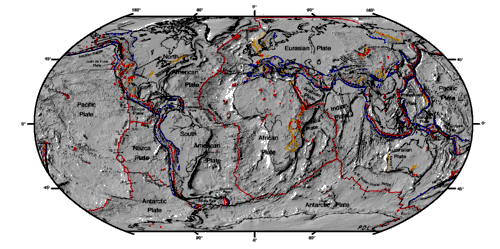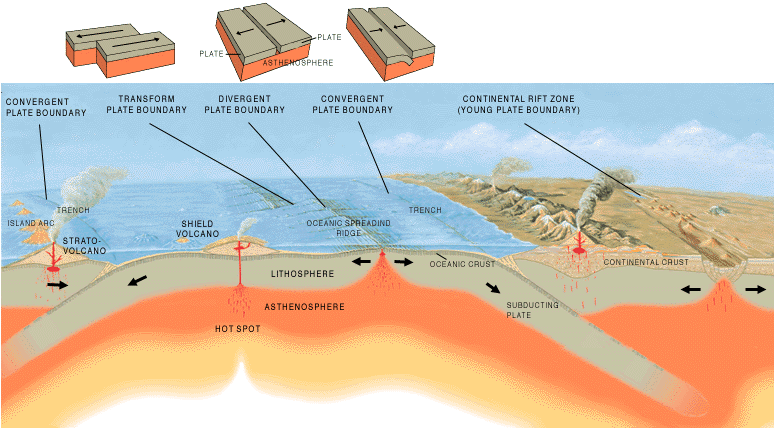
Geology
This pages outlines briefly the geological setting of Iceland. Iceland is a true paradise for geologists, no wonder! It lies on the mid Atlantic ridge, halfway between the European and American tectonic plates. The earth consists of about a dozen tectonic plates which move with respect to each other.

Some plates converge as other plates diverge. Iceland lies on a boundary of two diverging plates, allowing magma to be intruded thus causing volcanism in Iceland.

Moreover, this place seems to be a hotspot as well so magne intrudes into the earth crust here with extra large quantities. The two fault zones are clearly visible on the map below. One from SW to NE, the second from the south, meeting the first one in the middle of the country. Along these fault lines one can find the place with most seismic activity and thermal areas. Click on the map to view a more detailed map.
The mid-Atlantic ridge runs from SW to NE. However most activa and the most dangerous volcanoes of Iceland are located on the second faultzone (despite it fading out off the south coast). The most notorious volcanoes in this area are: Eyjafjallajokull, Katla, Hekla and Grimsvotn.